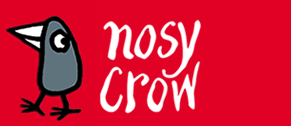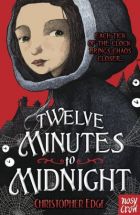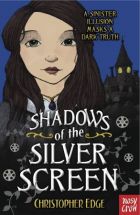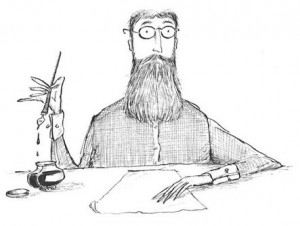Registration for the Nosy Crow “How to Write Children’s Fiction” Masterclass was due to start at 9:30. To make sure I wasn’t late, I booked train tickets leaving Leicester at 7am. To make sure I didn’t miss the train, I booked a taxi for 6:20am. To make sure I didn’t miss the taxi, I set my alarm for 5:10am.
Then I woke up at 3am anyway.
It’s safe to say that I was pretty excited about attending the Nosy Crow Children’s Fiction Masterclass. Excited, and a bit nervous – because as part of the course, attendees were offered a critique of a synopsis and three chapters of their work. I’d sent off a chunk of my Dundee First World War book, The Wreck of the Argyll, and it’s always nerve-wracking when someone reads my work.
I travelled down with Colin Jones, a fellow aspiring writer who works for the same company as I do, and we arrived at the Nosy Crow offices in Dickensian Lant Street just after 9am, despite making a stop at Hatchard’s bookshop in St. Pancras. They were still setting up, so we wandered off and had a coffee in the fabulous Terry’s Cafe just around the corner, where we ended up in conversation with a pair of elderly well-spoken gentlemen about Wolf Hall (“terribly good actors, but I can’t understand a word Anne Boleyn says”) and Scottish politics (“Henry VIII might have sorted out the Scots in Tudor times, but the SNP are going to hold the balance of power after the next election”) before it was time to head back to the Nosy Crow offices.
There were about 20 attendees for the class, several from London but some from further afield – I chatted to a chap who’d come down from Preston and a woman who’d come from Cumbria. (We were wearing name badges on lanyards, but for some reason they had a habit of being flipped around to show a blank face every time I looked, so apologies for not knowing anyone’s names!) The room was pretty full – I don’t think they could have squeezed any more seats in. Cosy, but not cramped.
It was a packed timetable – eight sessions, plus the critiques over lunch, with two coffee breaks, and drinks afterwards.
Introduction
Kate Wilson, the Managing Director of Nosy Crow, gave a quick introduction to the day, to Nosy Crow, and to the state of the industry in general. There were graphs. Lots of graphs. Children’s fiction makes up a huge part of the market, out-performing adult fiction in a lot of ways, but most importantly, perhaps, it remains a resolutely paper-based market. While adult fiction is becoming more and more dependent on the ebook market, well over 90% of children’s books are paper. The older the book’s audience, the more important ebooks become, but still, any dreams you might have of putting your middle-grade adventure up on the Kindle store and storming the market are pretty unlikely.
Kirsty Stansfield
Kirsty Stansfield is Nosy Crow’s Fiction Editor, and she gave an editor’s perspective on writing children’s fiction. A constant source of contention is the appropriate length for middle-grade fiction – when I wrote my first two books, I looked at the lengths of books for comparable audiences, and worked out that a length of 70,000 words wouldn’t be unreasonable. How wrong I was! Kirsty said that in her experience, fiction for 8-12 year olds should be between 20,000 and 45,000 words. This is a slightly wider range than I normally see, where most people suggest 30,000 to 40,000 words, so I reckon you’re not going to go wrong sticking to the 30-40K mark.
One thing that caused some discussion was the use of strongly-gendered covers for books. There’s a strong feeling amongst many writers that we should let books be books, and not limit the audience, but from a publishing point of view there are often better returns by slapping some glitter and princesses in pretty frocks on the cover. Sometimes a book that the author might think has broad appeal might actually do better if marketed to girls – one example that Kate came up with later in the day to corroborate this was Christopher Edge’s series. The first book has a very striking cover:
but the feedback Nosy Crow got was that the main character was a bit too androgynous. For the second book in the series, the cover looks like this:
with a much more feminine picture.
But this is all marketing. Writers don’t get a say in the book cover! From a writer’s point of view, what you you need to do is to make it clear what audience you’re targeting. But more importantly than that, you need to convince a very busy editor that your book is worth spending their time on. And that you, as a writer, are a sane human being with whom they can do business.
Paula Harrison
Paula Harrison is the author of the Rescue Princesses series for younger children and the Red Moon Rising series for older children. Her talk covered writing series fiction. She distinguished between series for younger readers, like Rescue Princesses, where each book is self-contained and can be read out of order because in general there’s no story arc (although there might be some elements of continuity), and series for older readers, where there’s a definite story that’s split across multiple volumes. But of course, as a fly in the ointment, even for older readers, they might pick up the books out of order, so they need to make sense on their own – this might involve a recap of the previous volumes.
Paula’s suggestion for series fiction was to write, edit, polish and submit the first book in the series, while preparing an outline for the next few – don’t write multiple volumes, as you might get a call from an editor saying “great idea, but how about if…” and then suddenly you don’t have one book to rewrite, you’ve got six…
Gemma Cooper
Gemma Cooper is an agent with The Bent Agency, and discussed the role of the agent. Gemma sees her job as managing the career of the writer, not just representing individual books. But that takes a lot of time and effort, so there’s limited opportunity for new writers to join the team. In the course of a year, Gemma will receive thousands upon thousands of submissions, and she may end up taking on only two or three new clients.
The odds are not in the writer’s favour.
So to make sure you’re not sabotaging yourself and making your odds even worse, follow the submission guidelines. Definitely don’t read the guidelines, break them, then say in your letter “I didn’t follow the guidelines because…” as there’s no way to finish that sentence without infuriating an agent.
If you can find out what the agent likes, so much the better. Not all agents publish their wishlists; in fact, some agents even make it difficult to find out who their clients are. If you’re going to compare your work to something else, you’re going to have a better chance if you don’t compare it to a blockbuster, but instead to a book that the agent represents, or that you know they like.
Critique
The morning flew past. Four sessions in the blink of an eye. I knew there had been a lot of content, though, because my fingers hurt from writing in my notebook.
The lunch break, though, seemed to last for hours. Because I was waiting for my critique session. They posted a list – Kate, Kirsty, and Gemma were all running sessions with the attendees who’d provided their three chapters, and I was on Gemma’s list. Last.
Four or five hours later (or so it seemed), I was ushered into the office to sit with Gemma. She’d gone through my sample chapters and synopsis, and provided some great advice about retaining the close third-person POV and not head-hopping into another characters POV, about breaking up the dialogue with beats, and about making sure that I kept the story rooted in the emotional reactions of the protagonist to the unfolding events: “How does this make her feel?” is Gemma’s favourite comment!
However… The Wreck of the Argyll has two intertwined stories – one with the plucky Dundonian youngsters foiling the spy plot, and the other on board HMS Argyll, where the POV character is a midshipman, not much more than a boy, on his first voyage. Gemma didn’t like the sea-based chapters, saying they were too much like YA fiction because Harry was a couple of years older than Nancy and Jamie (midshipmen were regularly 15-16 years old when they got their first berth). She said I should cut those sections out.
Which would leave me with half a book. 17,000 words.
Which is obviously not viable. Which would mean a complete rewrite. And a new ending (which is one of the bits I’m most pleased with). And… well, it would be a completely different book. I’d pretty much have to start from scratch, and maybe salvage a few bits and pieces from the original.
My confidence has taken quite a knock. After I’ve been up to Dundee for the competition result, if The Wreck of the Argyll doesn’t win (and the competition looks very strong), my intention was to shop the manuscript around agents; but it’s distinctly possible that Gemma’s objection to the Midshipman Harry Melville bits would be representative of other agents’ reactions.
So I’m not sure what to do about that. Much thought will be required.
Helen Peters
Helen Peters is the author of The Secret Hen House Theatre and its newly-published sequel The Farm Beneath the Water. Her session covered what she went through turning her original draft of Secret into a publishable form. It took years and years, draft after draft, polishing and restructuring and rewriting.
In particular, it meant being brutal with chopping out setup. Get right into the action – or as Helen put it, paraphrasing William Goldman, for each scene, get in late, get out early. Don’t build up and tail off. Maintain the tension.
I’m incredibly impressed by her tenacity, and her belief in her story – to keep working on it for so many years, she must have had such faith that it was a story that needed to be told. And it’s all been worth it – The Secret Hen House Theatre is funny, touching, exciting, and moves at a cracking pace. I’d normally never read a book like this – a girl living on a farm sets up a theatre in an old hen house? Where are the battleships? Where’s the magic? Where are the dragons? – but it’s been one of my favourite books this year, and I jumped at the chance to pick up the sequel, hot off the presses, at the Nosy Crow offices.
Ellen Renner
Ellen Renner is the author of the middle-grade fantasy books Castle of Shadows and City of Thieves, and the YA books Tribute and Outcaste. Her books are rich fantasy novels in the vein of The Wolves of Willoughby Chase – I hope she wasn’t offended when I told her I thought Castle of Shadows reminded me of Joan Aiken. I once asked Iain Banks if The Bridge had been influenced by Alasdair Gray’s Lanark – not meant as an accusation, but as a compliment.
Ellen’s talk covered world-building in fantasy, and if there’s one thing I’ll take from her talk, it was the danger of telling your readers all about this great world you’ve invented. World-building isn’t an end in itself. For J.R.R. Tolkien, the world-building really was an end in itself – he was more interested in the philology of Quenya and Sindarin than he was in telling a story. In Tolkien’s case, the story is a vehicle for the world-building, not the other way around.
Ellen contrasted this approach with the great Diana Wynne Jones, whose fantasy worlds were every bit as richly imagined, well thought out, and consistent as Tolkien’s, but who never stopped to give the reader a ten-page lecture on genealogy or etymology.
Philip Ardagh
Before the penultimate session of the day, Kate shuffled all the chairs back a couple of feet so we wouldn’t get a crick in our necks looking up at Philip Ardagh. Six foot eight with a beard like W.G. Grace’s more hirsute brother, he commands attention when he walks into the room – then he proceeds to crack everyone up laughing. He can’t help it. He’s naturally funny – and this comes across in his writing.
Philip’s session was primarily (and I say primarily, because one of the other themes was, arguably, poo) about authorial voice. When the first Eddie Dickens book, Awful End, was about to be published, Philip was told that he could have 44 illustrations, and could he specify which bits he wanted illustrated, please?
Illustration number 1 – Philip Ardagh:
Why? Because in the Eddie Dickens books, the narrator, the authorial voice, is as much a character as Eddie Dickens or Malcolm the Stuffed Stoat.
For a funny, larger-than-life character like Mr Ardagh, this is ideal. His voice comes across in his fiction – he makes you laugh when he’s in the room, and he makes you laugh when you read his books.
But no-one wants to listen to a boring middle-aged Scottish technical author, so I’m going to have to make do with the voices that belong to my characters.
Kate Wilson
The final session of the day was led by Kate, who gave us a presentation on what she saw as the role of the publisher – all the jobs that a publisher does, from number one, most importantly, paying the author, right through to making sure the warehouse roof is kept clean of decomposing pigeons.
Kate is energetic, driven, and committed to honesty and transparency in her business. If you ask her where the money goes, she’ll tell you. (It’s usually on cheese and Minstrels.) You can see why authors want to work with Nosy Crow – it’s a small publisher making a big impact and trying to do things right.
By the end of the day, my head was full to bursting. I had a notebook full of scribblings, my annotated chapters from Gemma, and a couple of new books from the Nosy Crow shelves, graciously signed by Philip and Helen. (Ellen signed a copy of Castle of Shadows for me, too – she doesn’t have any books out with Nosy Crow yet, so I had to bring this one from home.)
Colin and I missed our tube stop at King’s Cross St. Pancras because we were so engrossed in conversation talking about the day, but we made it onto the train. Which then got stuck outside Leicester because of a signal failure. I made it home at about 11pm, about twenty hours after I woke up that morning.
It’s going to take a while to process everything I learned. The whole day really was an incredible experience that I wouldn’t have missed for the world, and I’m grateful to all involved for sharing their expertise.
I don’t know if Nosy Crow will be running any more of these courses (apart from the forthcoming sister masterclass focusing on picture books) but if you ever get the chance to attend one, grab it with both hands.
Just try to get a decent night’s sleep first.




Thank you so much for this generous and valuable insight into what you took from the day. It was hugely interesting for us too: we have much to think about as well!